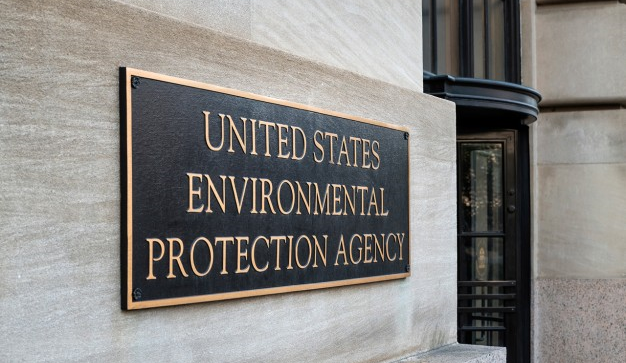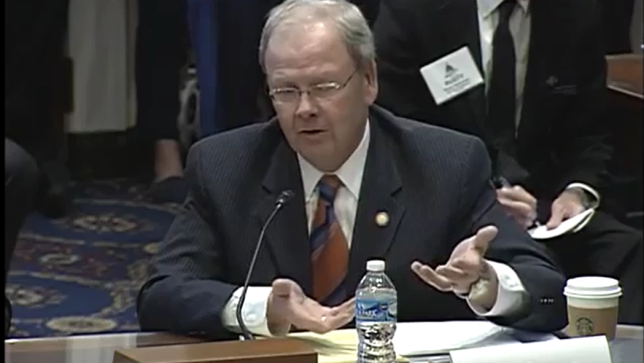By: Dr. Mercola
Worldwide, more than 5 billion pounds of pesticides are sprayed onto crops each year,1 and more than 75 percent of the US population has detectable levels of organophosphates (OPs), which are among the most commonly used insecticides on American farms.
Your diet is one of the most likely routes of exposure – unless you're a farmer or live near an agricultural area. For farm workers, their children, and those who live in farming communities, pesticide exposure is a fact of life, but one that puts their health in serious jeopardy.
The next time you’re at the grocery store deciding between organic or conventional strawberries, realize that the decision affects far more than your own health. For the farm workers spraying those fields, and the children living and going to school near them, the pesticide exposure will be far greater than it will be for you.
Most of the farm workers are forced to work in these hazardous conditions in order to feed their own families, but that’s because pesticide-laden conventional produce is still accepted and dominates the market.
Ultimately, a shift to an organic, more sustainable food supply would make all the difference – not only for the families that eat the food but also for the farm workers who grow it.
Farm Workers Are Exposed to High Levels of Pesticides
A recent report from Farmworker Justice highlighted just how bad the pesticide exposure has become.2 Up to 20,000 farm workers are poisoned by pesticides each year, according to data from the US Environmental Protection Agency (EPA).
The actual number is likely far higher, as many of the workers may not seek medical care or may be misdiagnosed if they do seek treatment. There is also no coordinated national incident reporting system to track such exposures. Despite this, pesticide exposures cause farm workers more chemical-related injuries and illnesses than any other workforce nationwide. According to the report:3
“Farmworkers are exposed to pesticides in a variety of ways. Workers who perform hand labor tasks in treated areas risk exposure from direct spray, aerial drift, or contact with pesticide residues on the crop or soil.
Workers who mix, load, or apply pesticides can be exposed to pesticides due to spills, splashes, and defective, missing, or inadequate protective equipment.
Even when not working in the fields, farmworker families, especially children, are also at risk of elevated pesticide exposure. Workers bring pesticides into their homes in the form of residues on their tools, clothes, shoes, and skin. They inadvertently expose their children through a hug if they cannot shower after work.
The close proximity of agricultural fields to residential areas results in aerial drift of pesticides into farmworkers’ homes, schools, and playgrounds. Some schoolyards are directly adjacent to fields of crops that are sprayed with pesticides.
Pesticide exposure is an unavoidable reality for farmworkers and their families because pesticides are in the air they breathe, the water they drink, the food they eat, and the soil they cultivate.”
Health Impacts of Pesticide Exposures
There are both short- and long-term effects that occur from pesticide exposures. In the short-term, exposures can lead to rashes, blisters, stinging eyes, blindness, nausea, dizziness, headaches, coma, and death.
Some effects are delayed, however, and may not be immediately apparent. Such long-term effects include infertility, birth defects, endocrine disruption, neurological disorders, and cancer.
There are about 2.5 million farm workers in the US, about 60 percent of whom live in poverty. Most of them lack legal work authorization, which means they’re unlikely to report violations of workplace safety, abuse of protective regulations, or even seek medical attention for potential poisonings.
Further, some symptoms of pesticide exposure resemble the flu, so many workers aren’t aware of the exposure. There are also language barriers to factor in and the risk of employer retaliation if a farm worker challenges unsafe pesticide practices or seeks medical treatment for pesticide exposures. According to the report:4
“Rural and agricultural communities have been found to experience higher rates of leukemia, non-Hodgkin lymphoma, multiple myeloma, and soft tissue sarcoma, as well as cancers of the skin, lip, stomach, brain, and prostate.
Workers who reported farm work as their primary occupation suffered elevated risks for prostate cancer, esophagus cancer, and oral cavity cancers. …
Pesticide exposure is attributed to higher rates of birth defects, developmental delays, leukemia, and brain cancer among farmworker children.”
‘Absolute Proof’ of the Damaging Effects of Pesticides on Children’s Brains
Because the effects of pesticide exposure aren’t always immediate, it can be difficult to tie them directly to the health problems they cause. However, the CHAMACOS Study showed that very small amounts of pesticides may be harming kids’ brains.
It followed hundreds of pregnant women living in Salinas Valley, California, an agricultural mecca that has had up to a half-million pounds of organophosphates sprayed in the region per year.
The children were followed through age 12 to assess what impact the pesticides had on their development.5 It turns out the impact was quite dramatic, and mothers' exposure to organophosphates during pregnancy was associated with:6
- Shorter duration of pregnancy
- Poorer neonatal reflexes
- Lower IQ and poorer cognitive functioning in children
- Increased risk of attention problems in children
Research published, ironically, the same day as the CHAMACOS study, also found that prenatal exposure to chlorpyrifos (Dursban, a pesticide once used to control cockroaches in inner cities) was associated with lower IQs and poorer working memory in three-year-olds.7
A senior scientist at the Natural Resources Defense Council, who is now an official at the California Environmental Protection Agency (EPA) said the combination of studies come "about as close as I can imagine to absolute proof" of the damaging effects of pesticides on children's brains.8
It is this cumulative effect of numerous chemicals, particularly to developing children, that likely poses the greatest risks of all. Brenda Eskenazi, chief investigator of the CHAMACOS study, noted:9
"The other thing we don't know about is the combined effect of exposures … Throughout the course of a day, people may eat several different types of produce, each of which may bear traces of one or more pesticides. They encounter other types of chemicals as well — from antibacterials in soaps, to plasticizers in foodware, to flame retardants in the furniture… By day's end, you've got a combination of chemicals and an unknown level of risk."
This level of risk is heightened significantly among the children of farm workers who also live and go to school in close proximity to the heavily sprayed fields…
Many Farm Workers Are Unaware of the Risks They’re Facing
A federal law known as the Work Protection Standard (WPS) requires pesticide safety training for farm workers, notification of pesticide applications, and emergency medical assistance. However, it is weakly enforced and many workers only watch a 20-minute video about pesticide exposure symptoms once every five years.
Pesticide applicators are at heightened risk as well, since many speak Spanish but the pesticide labels (including the safety information and health risks) are written in English. Available safeguards, such as requiring pesticide applicators to sit in an enclosed cab with a ventilation system (as opposed to in the open cab of a truck) are not often used or required.
Many of the workers are simply not aware of the health risks posed by pesticides and are often unaware when exposures occur. Medical monitoring of workers who regularly handle neurotoxic pesticides, which allows overexposures to be identified before there is irreversible harm, has been shown to help reduce the risks – but it’s not required.
No-spray buffer zones around area homes, schools, and parks could help to protect workers and their families from aerial pesticide drifts… but perhaps the more pressing question is why we continue to use such toxic chemicals on agricultural fields in the first place.
EPA Botches Pesticide-Spraying Settlement
In 1999, a civil-rights complaint was filed against the California Department of Pesticide Regulation. Farm workers in the strawberry fields near Oxnard, California were concerned the pesticides sprayed on the fields were contaminating nearby schools. And the complaint alleged that agricultural pesticides were being used more heavily around schools with mostly minority student populations.
After an investigation, the US Environmental Protection Agency (EPA) released its preliminary finding and, in a first and only decision, ruled it a case of discrimination and settled with the state of California. The EPA touted this as a victory for the farm workers… but there were just a few problems… For starters, the EPA took more than a decade to issue their finding – in 2011. By that time, the children in the schools in question had long since graduated and some had even started families of their own. The terms of the settlement were also far from “victorious.”
The California Department of Pesticide Regulation, in exchange for admitting no wrongdoing, agreed to put an additional air monitor near a school. And the original complainants, who are supposed to be a part of the process, weren’t notified of the EPA’s discrimination finding until after the settlement with the state was announced; they had no input whatsoever.
EPA Ignores Ongoing Spraying of Toxic Chemicals Near Schools…
The complainants tried to get the EPA to reopen the settlement negotiations, but the agency refused. One of them even filed a lawsuit against the EPA for the way it handled the investigation and settlement, but it was dismissed in 2014 (an appeal is pending). One of the main atrocities of the case is that it had mentioned, in 1999, the regular use of the fumigant methyl bromide, which was linked to neurological effects and lung and kidney damage. In 2005, the US agreed to phase the chemical out, but farmers were allowed to continue to spray it on strawberries until 2015.
By the time the EPA’s decision was made, methyl bromide was already being widely replaced… but the EPA didn’t factor in the chemicals being used to replace it. So while methyl bromide was certainly less of an issue, replacement chemicals, like 1,3-D, a probable carcinogen, should have been investigated – but were not. As reported by The Center for Public Integrity:10
“The settlement agreement didn’t take into account the chemicals that would spring up to replace methyl bromide. In fact, it focused only on the use of methyl bromide between 1995 and 2001 — the years leading up to when the case was filed, and later accepted for investigation. The EPA said at the time that it looked at methyl bromide because the chemical was specifically mentioned in the complaint. [Brent] Newell [legal director for the Center on Race, Poverty, and the Environment, which is one of the agencies that filed the complaint], called it a dereliction of duty.
‘I still do not know why EPA did not include the fumigants that were replacing methyl bromide,’ he said. ‘… Now, if they didn’t do it because they’re incompetent, that’s a problem. If they knew about it and they decided to deliberately restrict their investigation to only methyl bromide, then that’s an even bigger problem. They would be ignoring evidence that’s material to the investigation.’”
The Floriculture Industry Is Also a Danger to Its Workers
It’s not only pesticide-laden produce that is putting workers’ lives at risk; the cut flower industry is also among one of the worst for pesticide exposures. A 1990 study looking at the prevalence of reproductive problems in Colombian workers exposed to pesticides while growing flowers found that workers in the floriculture industry were exposed to 127 different types of pesticides.11 According to the study:
"The prevalence rates for abortion, prematurity, stillbirths, and malformations were estimated for pregnancies occurring among the female workers and the wives of the male workers before and after they started working in floriculture, and these rates were related to various degrees of exposure. A moderate increase in the prevalence of abortion, prematurity, and congenital malformations was detected for pregnancies occurring after the start of work in floriculture."
Years later, a study published in the International Journal of Environmental Health Research again assessed the risk factors associated with pesticide exposure among farmers of cut flowers — this time in the Philippines.12 Thirty-two percent of the workers reported pesticide-related illnesses since starting work in the flower business, which typically centered around their eyes, ears, nose, and throat. The most commonly reported symptoms were weakness and fatigue, muscle pain, chills and fever, blurred vision, dizziness, and headache.
In a flower-growing region in Northern Ecuador, where female employment in the industry is high, researchers found that “prenatal exposure to pesticides – at levels not producing adverse health outcomes in the mother – can cause lasting adverse effects on brain development in children.” They conclude that pesticide exposure may contribute to a "silent pandemic" of developmental neurotoxicity in school-age children.13
By Eating Organic, You Can Help Shift the Agricultural Industry Away from the Use of These Toxic Chemicals
Your best bet for minimizing health risks from pesticide exposure is to avoid them in the first place by eating organic as much as possible and investing in a good water filtration system for your home or apartment. Alternatively, you can try growing some of your own produce using organic methods right in your own backyard. One of the benefits of eating organic is that the foods will be free of genetically modified (GM) ingredients – and this is key to avoiding exposure to toxic glyphosate.
Eating locally produced organic food will not only support your family's health, it will also protect the environment from harmful chemical pollutants and help shift the agriculture industry away from conventional farming with the use of toxic chemicals – a must for worker protection. As for cut flowers, you can sometimes find organic cut flowers for sale at farmer’s markets, flower shops, and health food stores, and they’re also available to order online.
In the absence of organic certification, you can also look for fair trade certification, as fair trade programs pay greater attention to protecting worker's health and wellbeing, and typically use fewer or less pesticides.
When consumers speak up, corporations listen. It’s because of consumer demand that we’re seeing major chicken producers nixing their use of antibiotics in chicken. If enough people demand organic, pesticide-free food, and other goods, the agriculture industry will have no choice but to listen. Finally, if you know you have been exposed to pesticides, the lactic acid bacteria formed during the fermentation of kimchi may help your body break them down. So including fermented foods like kimchi in your diet may be a wise strategy to help detox the pesticides that do enter your body.
Originally Published: Eat Local Grown















